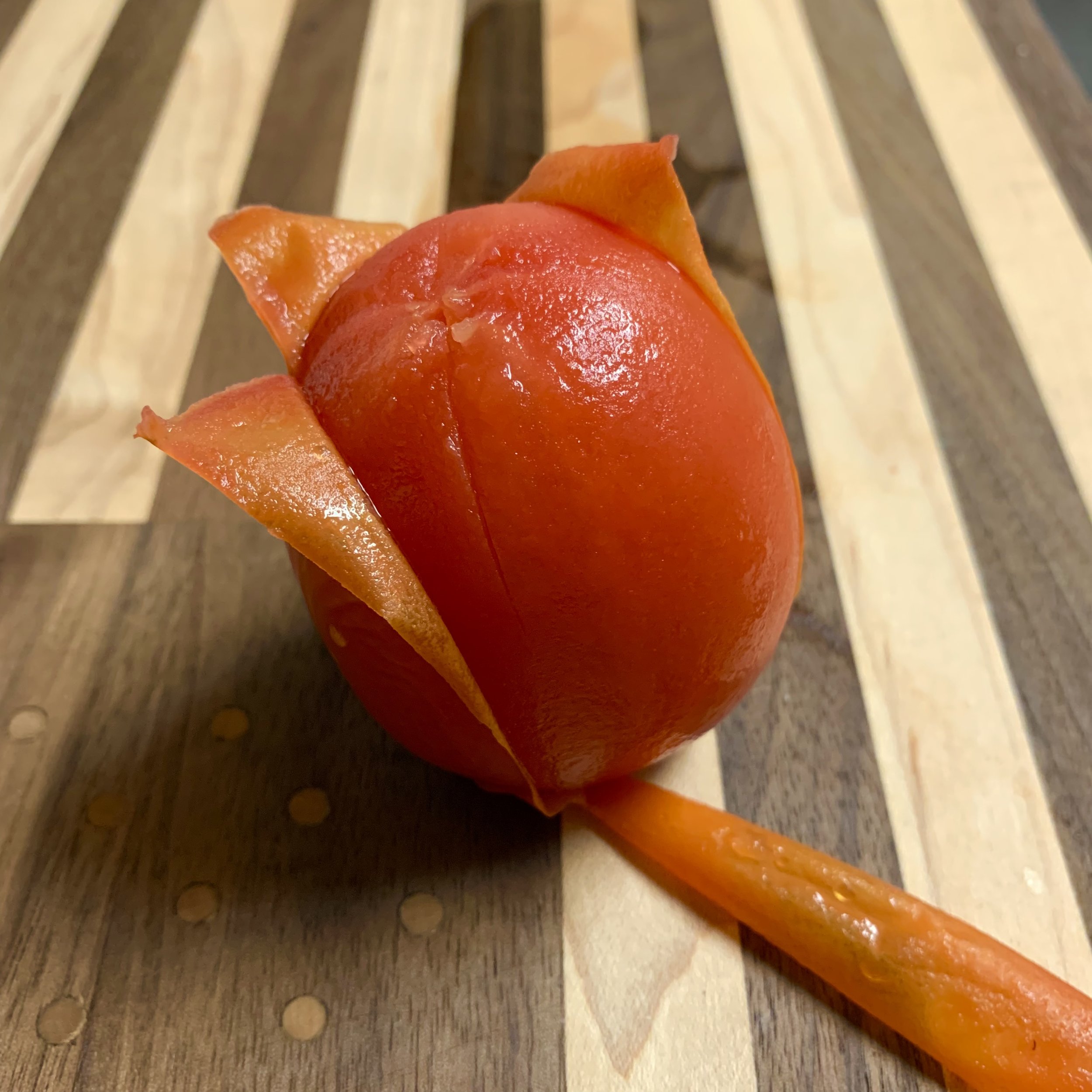Tasty but Lacking a Peel
If you’ve ever made your own tomato sauce, you know that you need to peel the tomatoes first and remove their pulp. Why all the fuss?
First, removing the skin and pulp improves the texture of the sauce. As the sauce simmers, the flesh of the tomato dissolves but the hard seeds in the pulp and tough pieces of skin remain. Besides being unpalatable, producing a hard, chewy pasta sauce is a good way to get slapped upside the head by your tiny Italian grandma.
The second reason is taste. The skin and pulp tissues of tomatoes contain high levels of flavonoids. Flavonoids are chemical compounds that function as antioxidants and play a beneficial role in disease prevention. But like anything healthy, flavonoids don’t taste the best. They are often perceived as bitter, and no one wants a bitter sauce, especially your tiny Italian grandma. SLAP!
To produce a tasty sauce, fresh tomatoes are first blanched to remove the skin. This involves immersing the tomatoes in boiling water to loosen the skin and then shocking them in an ice bath. The skin then peels right off. Next, the tomatoes can be cut, pulped and simmered. Of course, you could just buy pre-skinned stewed tomatoes in a can, or, lazier yet, a jar of pre-made sauce . . . but I don’t think grandma would approve. SLAP!
In 2020, 38.3 million kilos of industrial tomatoes were produced globally. Processing these tomatoes for pastes and sauces generates a considerable amount of waste in the form of all that skin and pulp. About 5% of a tomato is waste product. Worldwide, this amounts to thousands of tonnes of skins and seeds produced each year. While in the past, processing plants would simply dump these materials into a nearby river, new practices seek utilize so-called “waste.” Seeds can be separated from the pulp and pressed to produce an oil similar to olive oil in its heat value and useful for soap making. The left-over seed cakes contain high levels of nutrients and can serve as feed stock for animals, and skins have been used with great success as fertilizer.
Just like grandma used to say “You can use every part of the tomato . . . just not in my sauce. Mangia! Mangia!”
Brian Rutter, PhD, is the cofounder of Thing in a Pot Productions and a postdoctoral researcher in plant biology at Indiana University. Subscribe to our newsletter to receive our “Things About Things – Odd Facts About Plants” and video production tips in your inbox every month!
Works Cited:
Office for the Transfer of Research Results. “PRODUCTS, EXTRACTS AND BY-PRODUCTS OF TOMATO AS NEW FOOD INGREDIENTS.” ucm.es. 28 January 2023. https://www.ucm.es/otrien/complutransfer-products,-extracts-and-by-products-of-tomato-as-new-food-ingredients.
Rabak, F. (1917). The utilization of waste tomato seeds and skins (Vol. 626). US Department of Agriculture.
Toor, R. K., & Savage, G. P. (2005). Antioxidant activity in different fractions of tomatoes. Food research international, 38(5), 487-494.
Yao, L. H., Jiang, Y. M., Shi, J., Tomas-Barberan, F. A., Datta, N., Singanusong, R., & Chen, S. S. (2004). Flavonoids in food and their health benefits. Plant foods for human nutrition, 59, 113-122.

